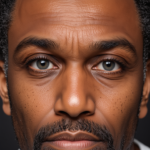Book Link 27 Video: Sensation & Perception
<back next> — index
Launch the video and listen for key points:
Prosopagnosia:
Also known as face blindness, prosopagnosia is a cognitive disorder characterized by the inability to recognize familiar faces, including those of friends and family members.
Sensation:
Sensation refers to the process of detecting a stimulus, such as sound, light, or pressure, by sensory organs and transmitting that information to the brain.
Perception:
Perception involves the organization and interpretation of sensory information in order to understand and make sense of the world around us. It includes processes such as recognizing patterns, interpreting meaning, and making decisions based on sensory input.
Stimuli:
Stimuli are physical events or objects in the environment that trigger a response in a sensory organ. Examples of stimuli include light, sound, temperature, and pressure.
Absolute threshold of sensation:
The absolute threshold of sensation is the lowest intensity of a stimulus that can be detected by a person’s senses, such as the faintest sound a person can hear or the weakest taste they can perceive.
Signal detection theory:
Signal detection theory is a psychological theory that examines how stimuli are detected or discriminated from background noise and takes into account individual variability in decision-making.
Sensory adaptation:
Sensory adaptation is the process by which sensory receptors become less responsive to a constant stimulus over time, allowing us to focus on new or changing stimuli in the environment.
Difference threshold:
The difference threshold, also known as the just noticeable difference (JND), is the smallest change in a stimulus that can be detected by an observer. It varies across different sensory modalities.
Weber’s law:
Weber’s law states that the just noticeable difference between two stimuli is proportional to the magnitude of the stimuli. In other words, the change needed to detect a difference is a constant proportion of the original stimulus.
Light spectrum:
The light spectrum refers to the range of wavelengths of electromagnetic radiation that our eyes can detect, leading to the perception of different colors.
Rods and cones in the eye:
Rods and cones are photoreceptor cells in the retina of the eye that are responsible for visual perception. Rods are more sensitive to low light levels, while cones are responsible for color vision and function best in bright light.
Color blindness:
Color blindness is a genetic or acquired vision disorder that results in a decreased ability to perceive differences in color, particularly between red and green hues, or blue and yellow hues.
Visual cortex:
The visual cortex is a region in the brain’s occipital lobe that processes visual information received from the eyes and is integral to the perception of visual stimuli.
Relationship of color, motion, form, and depth in vision:
This refers to the complex interaction between different visual cues, such as color, motion, form, and depth, in creating our perception of the visual world. These cues work together to give us a rich and detailed understanding of our surroundings.
Perception and Sensation Relationship to Psychology
Industrial and organizational psychology
In Industrial and Organizational Psychology, these concepts help in creating a workspace that helps employees do their best work. For example, they can be used to make sure that the lighting and noise levels in an office are just right. They can also help in designing offices that are comfortable and good for productivity.
In terms of the job, Industrial and Organizational Psychologists usually work in offices or consulting firms. They might need to travel occasionally to visit different workspaces and meet with clients, but it’s not a job that requires a lot of travel.
As for benefits, Industrial and Organizational Psychologists typically receive standard benefits such as health insurance, retirement plans, and vacation time. The lifestyle of an Industrial and Organizational Psychologist can vary. Some may work regular 9-5 hours, while others might have more flexible schedules depending on the demands of their clients or projects. Overall, it’s a career that can offer a good work-life balance.
Human factors psychology
In Human Factors and Engineering Psychology, knowing about these concepts is important for making products and computer interfaces that are easy to use. For example, it can be used to make sure that colors and displays are easy for everyone to see, even for people with color blindness. It can also help in making sure that computer screens and displays are easy to understand.
To pursue a career in Human Factors and Engineering Psychology, you will need to start by earning a bachelor’s degree in psychology, human factors, engineering psychology, or a related field. After completing your undergraduate studies, you should consider pursuing a master’s or a doctorate specializing in Human Factors and Engineering Psychology.
In terms of the job, Human Factors and Engineering Psychologists typically work in office settings, research facilities, or for companies that design products and interfaces. Travel requirements can vary depending on the specific job and employer, but it’s not typically a career that involves extensive travel. Benefits for Human Factors and Engineering Psychologists are likely to include standard employment benefits such as health insurance, retirement plans, and paid time off.
The lifestyle of a Human Factors and Engineering Psychologist can vary. Some may work regular hours, while others may have project-based deadlines that require additional hours from time to time. Overall, it’s a career that can provide a good work-life balance and opportunities for professional growth and development.
Therapeutic psychology
In therapeutic psychology, understanding these concepts is important for helping people who have trouble with their senses or how they see things. For example, it can be used to help people who have a hard time recognizing faces. It can also be used in therapies to help people who have trouble processing information from their senses.
To pursue a career in Therapeutic Psychology, you will need to start by earning a bachelor’s degree in psychology or a related field. After completing your undergraduate studies, you should consider pursuing a master’s or a doctorate in Clinical Psychology or a specialized field related to therapeutic interventions.
In terms of the job, Therapeutic Psychologists typically work in various settings such as private practices, hospitals, clinics, or mental health facilities. The nature of travel can vary depending on the specific job and employer, but it’s not typically a career that involves extensive travel.
Benefits for Therapeutic Psychologists may include standard employment benefits such as health insurance, retirement plans, and paid time off. The lifestyle of a Therapeutic Psychologist can depend on the specific practice or setting they work in. Some may have regular office hours, while others might have more flexible schedules to accommodate their clients’ needs.
It’s a career that can be rewarding, but it may also involve variable hours and a need for flexibility to meet the needs of clients.
Summary
In psychology, we learn about sensation and perception. Sensation is how we detect stimuli like sound and light, while perception is how we make sense of the world around us. Our eyes can see different colors because of the light spectrum, and the brain helps us understand what we see.
These concepts are also important in careers like Industrial and Organizational Psychology, where they help make workspaces better for employees. In Human Factors and Engineering Psychology, understanding these ideas helps create products and interfaces that are easy to use for everyone, including those with color blindness.
Overall, sensation and perception are important in psychology and in jobs that involve making workspaces and products better for people.